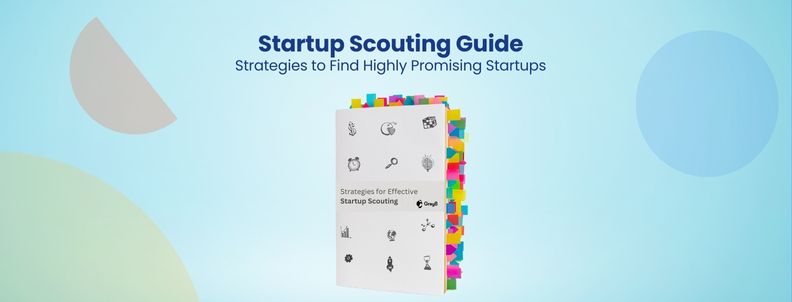To leverage external smarts, P&G launched its Connect and Develop (C+D) program in 2002. The C+D website later (www.pgconnectdevelop.com) became the binder for innovators, scientists, engineers, university researchers, and entrepreneurs with P&G.
By 2014, more than 35% of new product launches were due to leveraging external smarts – the percentage was 15 in 2000. The C+D increased the R&D productivity of P&G by 60%. The list below provides glimpses of how P&G launched some of these innovative products:
- Trademark licensing with leading brands: P&G partnered with Disney with an in-licensing agreement. It gave Oral-B a new way to reach children: characters kids love to brush with.
- Launched joint ventures: A partnership between P&G and Inverness Medical resulted in the formation of a new company: Swiss Precision Diagnostics which resulted in P&G entering into the consumer healthcare business which was a new growth area in that period.
- In-out licensing: Dunkin’ Donuts coffee was a competitive market leader in franchise coffee sales. But it was not sold as a packaged product directly to consumers. P&G R&D developed a roast that delivered the same, good taste of a brewed cup of Dunkin’ Donuts coffee at a value price point. Then, P&G distributed the new product in stores across North America.
- Academia partnership: The University of Leeds and Procter & Gamble (P&G) agreed to establish a strategic relationship. The aim was to direct academic research to develop new high-tech products.
- Worked with independent inventors: While working from his home, an independent inventor developed an innovative fabric care solution in order to deliver fabric softener for clothes in the dryer. P&G licensed his patented product, combined it with existing P&G R&D work, and bring it to market as Bounce.
Just like P&G, you too might wish to find universities to partner with, companies with which you can collaborate, or tech experts of your technology that you can hire.
Further, to execute your open innovation strategies, you may have to find answers to some or all of the questions below:
- Which top universities are researching the technology of your interest?
- Who are the most prominent inventors that can help you solve this problem?
- What are the opportunities for your technology across alternative markets?
- Which companies would be the best suit for partnering to get an effective solution?
- Which problems in your domain if solved will lead to high commercial benefits?
Well, this is exactly where I would like to bring Patent Analytics into the picture. All these questions give way to answers that we can get from patent analytics.
So I hope you wouldn’t mind taking a few minutes of your schedule to read about how can one extra step (patent analytics) help in adding more structure to the open innovation strategy of your company.
Ready? Did you say yes? Great then! Let’s take a ride where I help you understand, using examples from different industries, how to use patents in your open innovation strategy.
Patent analytics to unlock the collaborative advantage
While going for open innovation, one of the main activities you will indulge in is forming alliances and partnerships for collaborations. Finding good partners help your company tap collaborative advantage.
But, out of so many companies out there, will all be suitable for partnership? If not, then on what parameters can you decide? Out of the many parameters, checking the patent filings could be one way.
Consider you are a company working in the smart home domain. You are trying to find a solution to the data privacy issue plaguing the Smart Home domain. After the research, you found that Blockchain is one of the solutions to this problem.
You would be more inclined toward the telecom companies that have already been researching to solve privacy issues using blockchain as there is a direct connection between Telecom and Smart Home Industry.

In this case, maybe you would like to partner with companies like British Telecom or Huawei that have patents filed in the solutions for safety and security. Patent analytics, hence, gives you a holistic view of the potential companies which can benefit you.
Finding external experts using patent analytics?
Partnering with the university opens the door for your organization to explore new technologies without investing in hiring talent or new infrastructure. University professors are the best subject matter experts engaged in solving issues at the edge of a technology spectrum.
Further, the students working in Industry-university collaboration can become a future talent pool. Thus, partnering with a university best fitted to your tech scouting requirements becomes paramount for the campaign’s success.
You can achieve the objective to find the best-fit university using patent analytics. You can also find the best professors to solve your specific technology needs.
Let’s have a look at an example to help you drive the point home sound and clear.
Consider you are looking for universities to collaborate with in non-photovoltaic cell technology. Having a look at the patent filings of the universities, you can have a narrowed-down list for the universities to choose from.

After filtering the top universities, you can further study their patents. These patents would help in finding the names of the top inventors. These names will represent the top university faculties. You can consider bringing these university tech experts in-house.
Also, you can negotiate a patent license agreement to bring the patented technology home. Buying these patents could be another option.
Further, in the chart above, we can see Chinese universities clinching 9 out of 10 spots. This gives you an indication of the research hotspot.
Well, it’s just not limited to finding the tech experts and academia for partnership or companies for M&A. Patent analytics helps in delivering useful insights which might help you while planning your open innovation strategy.
Finding tried and tested solutions in other industries to adapt to yours
Knowing about parallel industries that solved or are researching for solutions to the problems in your industry, opens many doors for more ideas and better solutions whereby you get a holistic view of the problems and solutions.

Well, consider you are one of the tobacco companies and want to innovate products for e-cigarettes. While doing research for one of the tobacco companies we came across the fact that more than 20% of patent filings are revolving around power management. This gives a clear signal that tobacco companies are trying to solve the problem of power management.
Now think about all the industries can are facing the problem of power management.
Do a good number of industries come to your mind?
The problem of power management already existed in several other domains, for example, smart wearables or mobile phones. Unarguably, these industries have also dealt with this problem in their own domains. Thus, a tobacco company could actually directly utilize their solutions through a licensing deal or a partnership or can perform common research for better solutions.
Certainly, there could be immense opportunities lying in the companies of different domains, it just needs an eagle’s eye to find the right one for your innovation strategy. And patent analytics might help you with the same.
Final Thought
Open innovation is like a pill of motivation you share with external and internal sources. It facilitates a continuous flow of ideas resulting in innovative products. However, the complexity is disguised in the simple idea.
Collaborating with different companies or universities might be dangerous if not done with proper analysis. Patent analytics here can help make sound data-backed decisions given that the research is done by experts. Leverage the knowledge of GreyB experts for your benefit.
Authored by: Priya Vashishth, Senior Research Analyst, Patent Analytics Team, and Megha Bansal, Jr. Research Analyst











